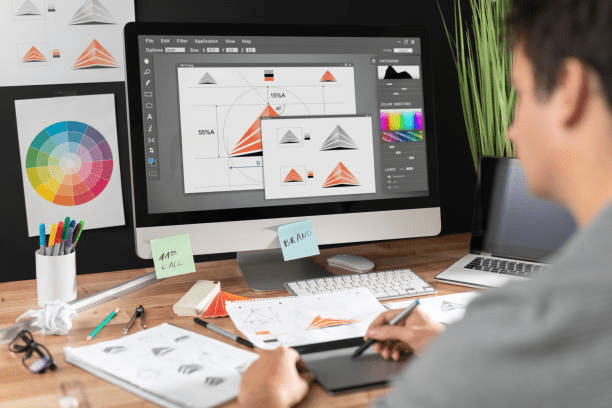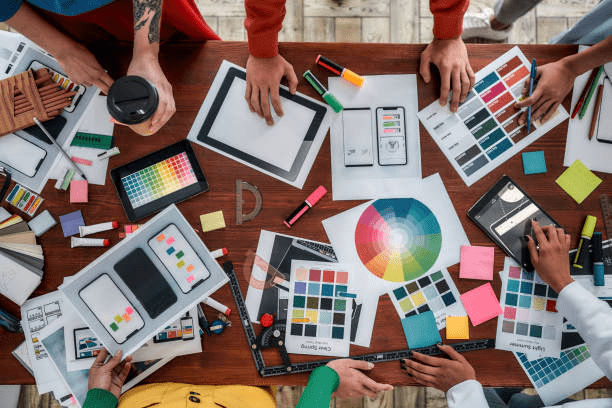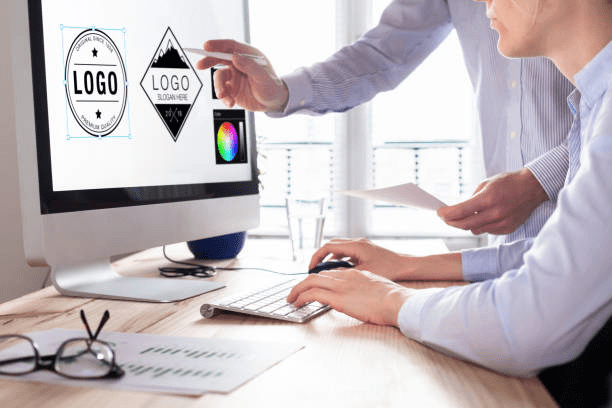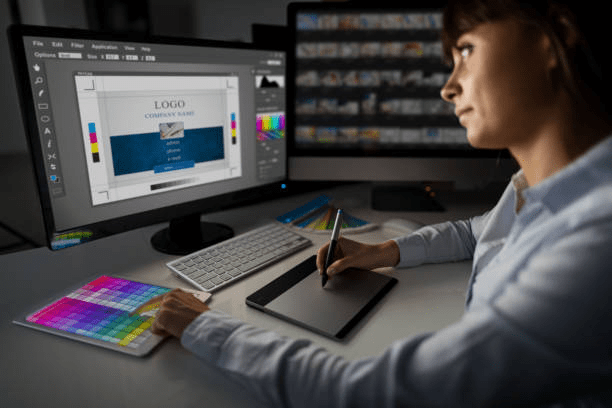Are you starting your own business? Or do you want a redesign for your existing logo? What could be better suited to this than a logo? These 5 tips will help you to be successful and guarantee a logo design that will present your company in the long term.
1) The Right Statement In A Neat Package

Imagine the design of your logo as the face of your company that you can shape. It is the figurehead of your company. Therefore, the logo should deserve the appropriate status. It is important that it not only looks “cool” but also reflects your services or products and appeals to your target group. Because: in marketing, self-portrayal is only of secondary importance. You want to generate sales, and you have to positively anchor yourself in your customers’ minds. In addition to you (and your employees), the first thing your customers will remember is the logo and with it the company name.
So that your logo hits the right note, ask yourself the following questions (or read your business plan again):
- What is my company name? Is there an appropriate, concise (and explanatory) slogan?
- What am I offering?
- What should the logo stand for? What values do I represent with my business?
- What sets me apart from the competition?
- Who is my target group? What does my target group like?
With these answers, you will help your designer a lot when creating logo designs. Based on your business model and your target group, it can be decided which style suits you. To name just a few directions for creating a logo: simple, elegant, playful, solid, light, delicate.
2) As Colorful As The Rainbow?

The pitfalls of choosing the right color are as varied as the selection of colors and color combinations. You are on the safe side with the following rules:
Rules for logo colors
- The logo color doesn’t necessarily have to be your personal favorite. It should fit your product, service, or a symbolic association and please your target group. How many 50-year-old men would buy a pink razor? Not all clichés have to be fulfilled. However, it is advisable not to scare off your own target group.
- Do not use more than 2 different colors in your logo. Exceptions confirm the rule: various symbol values, such as the color gradient as a decreasing energy requirement in the IMK logo in the start screen, can override this rule.
- Each logo should be monochrome and black and white just as easily recognizable as in the original colors. This is a decisive advantage, especially for copies, scans, stamps, and the like. For online and print advertising and advertising technology – which should attract attention – a white logo on a colored background may be required (e.g., a white logo on a car in a dark color or in the colored navigation of your website).
3) Typography And Font

Font groups & font marking
Fonts are divided into the following groups:
- Broken fonts
- Roman writings
- Linear fonts
- Serif fonts
- Written fonts
These differ in the inclination of the coating and the axis of symmetry, the presence, and characteristics of serifs, the line contrast, and much more. Thus you achieve different effects. When designing the logo, make sure not to use more than 2 fonts and to combine the font groups advantageously.
There are also various font styles such as Extralight, Light, Regular, Italic, Semibold, Bold, Extrabold, and the use of upper and lower case letters.
The optics and the human mind
Now we come to the tip that has an elementary influence on the look of your logo, in addition to the choice of font and color: lines, alignment, angles and the design laws.
2 basic rules for creating your logo
These 2 basic rules apply to all of my logo designs:
- Align as many outlines and spaces as you can.
- The angles in the logo should – if possible – be the same size.
With this, you can ensure that you get a visually coherent logo.
4) Application

One thing shouldn’t be forgotten with all the rules and styles: the logo should be used. Aspects relating to planned and future uses must not be neglected. The decisive factors are, for example, the line width and the basic geometric format (square, rectangular, round, oval).
The following uses illustrate the importance:
- Print & advertising material (high resolution required)
- Web (do lines disappear with low resolution/number of pixels?)
- Social media (very small profile preview image or only in the cover image?)
- Stamp (note line width and monochrome)
- Product branding via packaging, small labels, or engraving on wood, metal
5) File Sizes And Formats

Your designer is done with your logo, and you are satisfied? Great, then avoid the last few mistakes with my tips:
- You need your logo in different sizes, file formats, and colors
- Sizes (pixel size depending on the logo format)
- Large: with high resolution for printing or vector-based (unlimited scalability)
- Medium and small: web applications, social media profiles
- File formats
- .jpg: for web with white background
- .png: for web with a transparent background
- .svg : for web with transparent background and vector-based (unlimited scalability)
- .pdf: for printing with a transparent background and vector-based (unlimited scalability)
- .eps or .ai: for future adjustments by the designer
- Colours
- Original logo colors
- Monochrome in all corporate design colors
- White
Design that will present your company in the long term.
Need help with attractive Logo Design for your business? ElitionsDesign has you covered. Just leave us a message with your contact details, and we will get back to you within 24 hours.

